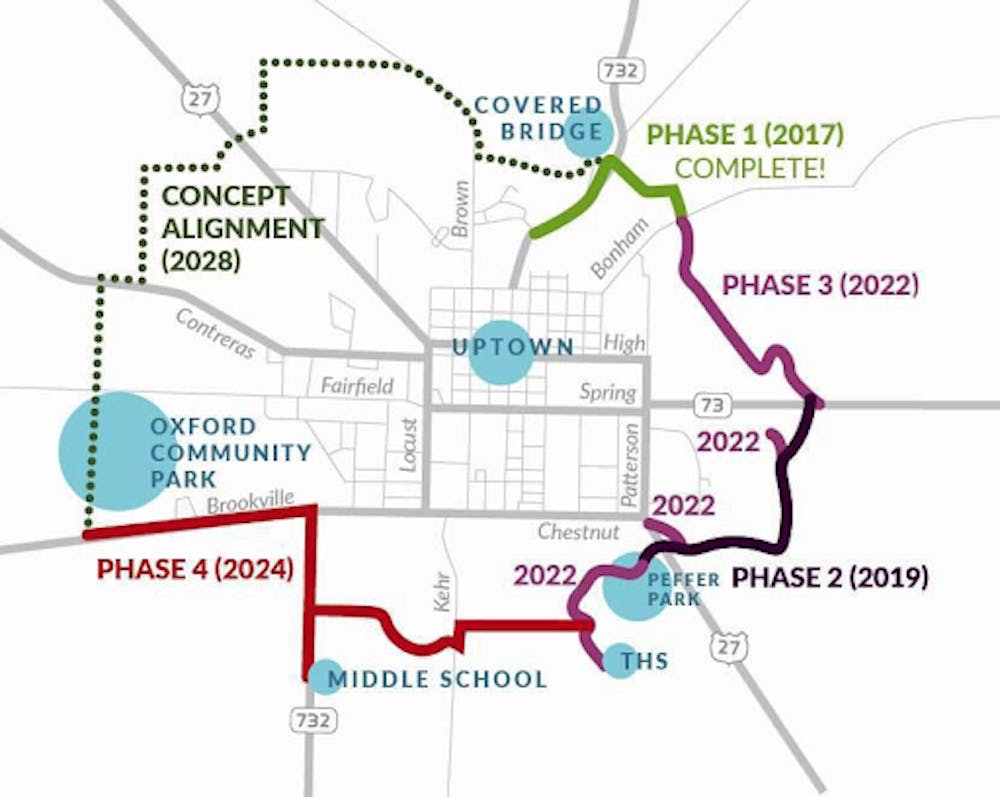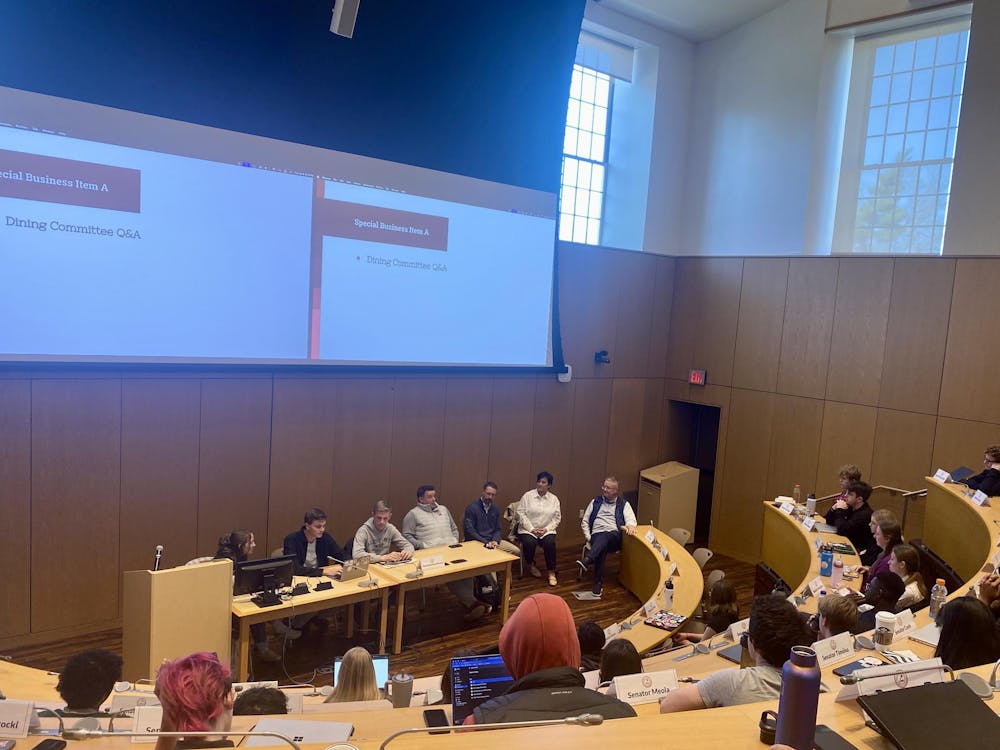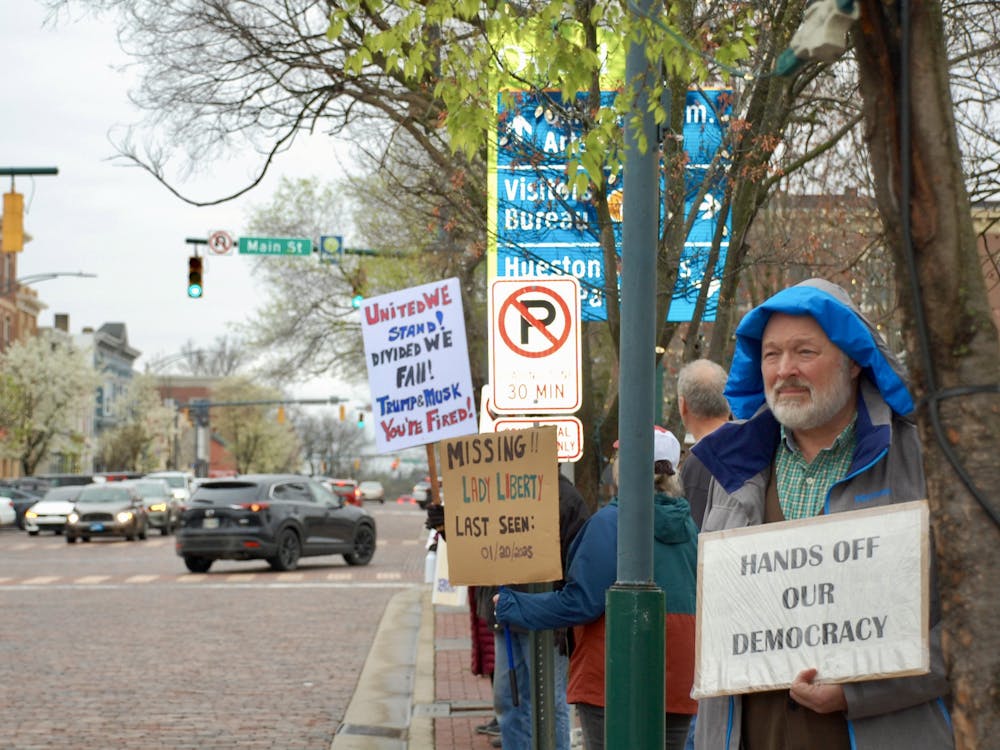The City of Oxford announced in an email to residents that planning for the northwest segment of the Oxford Area Trail System (OATS) will be put on pause for two years.
The announcement follows backlash from several Oxford residents, who opposed the path’s plans to be built on private property, unlike other segments which have been on publicly-owned land and natural areas.
“We have used the public planning process to solicit citizen feedback and have heard loud and clear that we got it wrong this time,” the email read.
Tensions about the trails date back to early this month after a Sept. 7 City Council meeting featured over an hour-and-a-half of public comments about the next phase of OATS. All but a few were criticisms of the northwest trail path.
Douglas Brooks, a retired Miami professor, has been a vocal leader against the trail, organizing with other Oxford area residents. Brooks is a key figure in Team Trail, a local group that has received more than 250 signatures from Oxford residents against the trail’s proposed path.
“It's one thing to craft a trail through a university preserve where the only homes are DeWitt Cabin,” Brooks said. “It’s another thing to ruin property values in five neighborhoods.”
Property value remains a recurring concern among private property owners against the trail. The northwest portion of the trail, if successfully built, would connect two areas of different economic statuses in Oxford currently divided by the train tracks.
The cluster of trailer park communities resides on one side of the tracks while the wealthy area near the Oxford Country Club resides on the other. The proposed trail would have connected the trailer park community to the Oxford Community Park and cut through neighborhoods along the way.
At the Sept. 21 City Council meeting, Brooks was first to speak during public comments and touched on legal recourse. Because the recommendation and voting process seemed “hurried,” Brooks said a lawyer had contacted City Manager Doug Elliot’s office.
“Team Trail estimates that the preferred trails will be opposed by at least 18 of these landowners, most of whom are long-standing and affluent members of the Oxford community,” Brooks said. “These people have considerable resources. Terry Hughes has already hired one lawyer to protect his 80 acres.”
At the same meeting, resident Raymond J. Richards said he lives near the Church of God and has had several problems with “homeless people building camps” near the area.
Richards expressed concern about homeless people on the potential trail.
Enjoy what you're reading?
Signup for our newsletter
“I don’t want [my grandkids] down in the woods, playing, and all of a sudden having homeless people, people riding bikes, people jogging,” Richards said. “We do have plenty of money. We do have lawyers. We’re going to do what we’re going to do to keep this off our property.”
Property value and lower-income residents weren’t the only concerns. Many residents at the Sept. 7 meeting noted traffic or safety concerns from the narrowing of their private roads.
Gary A. Speck, director of bands at Miami University, also spoke against the trail, which would go through Prevalent Drive, his neighborhood’s road.
Like others, Speck focused on safety and emphasized that many young children live on the road.
“The plan, as prescribed, is going to ruin that neighborhood – ruin that street,” Speck said.
Mike Pearson, who lives just off Prevalent Drive, also expressed concern about safety.
“It will be a skateboard that comes racing down without any notice. It will be a bicyclist. It will be a child. Something will happen,” Pearson said. “And now, that will be on our conscience. Do not allow this to happen.”
David Prytherch, city councilor and professor of geography, has been involved in the OATS plan for the past eight years. To him, heightened tension is part of the process. As an academic in urban planning and sustainable development, Prytherch said planning infrastructure is always a challenge.
“That’s exactly why the city invested in hiring a consultant to help run a planning process which involves technical analysis, engineering, but also a public engagement process,” Prytherch. “It’s not just about engineering, we have to have a conversation to find where the best route is because there’s no simple solution.”
Jessica Greene, assistant city manager, said the city hired Bayer Becker and KZF Design, engineering and planning firms with expertise in the technical analysis Prytherch mentioned. Greene said the city has invested $50,000 in this segment of the route.
According to the city’s email, it is currently working with Bayer Becker to revise their contract, so tax dollars can be appropriately reallocated.
Greene explained the thinking behind the trail’s proposed path through neighborhoods.
“It was meant to show citizens how we could do it within the city limits, and we thought there would be some cost savings there,” Greene said. “This would be a way we could do it.”
“What I’ve learned from public comments is that residents want a more recreational trail that’s scenic,” Greene said. “We’re listening.”
She said the benefit of the perimeter path is still worth the planning challenges.
“It is our goal to provide connectivity to community amenities,” Greene said. “This is part of a broader vision of connectivity.”
However, she and other city officials are still concerned with the timeline. The goal was to have the Oxford loop completed by 2028. Phases 1 and 2 are currently complete while Phases 3 and 4 are projected to finish in 2022 and 2024, respectively.
Even though the northwest segment is being put on pause, the city is still planning to complete Phases 3 and 4, which will attempt to connect Talawanda High School to the middle school.
But even after deciding alignments, it may take many years to actually acquire the land.
“If we cannot get private property owners to cooperate with land acquisition,” Greene said, “then the project risks being stalled.”
Even with the delay, Prytherch still sees a path forward.
“We have to trust the process; we have to affirm the public purpose, what are our goals,” Prytherch said. “We have to dispassionately assess the pros and cons of all the alternatives and make the best decision for the greater good.”




